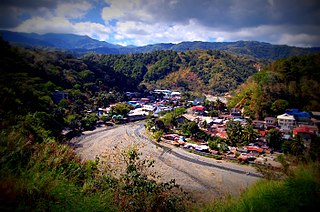
Nueva Vizcaya, officially the Province of Nueva Vizcaya, is a landlocked province in the Philippines located in the Cagayan Valley region in Luzon. Its capital is Bayombong. It is bordered by Benguet to the west, Ifugao to the north, Isabela to the northeast, Quirino to the east, Aurora to the southeast, Nueva Ecija to the south, and Pangasinan to the southwest. Quirino province was created from Nueva Vizcaya in 1966.

Quirino, officially the Province of Quirino, is a landlocked province in the Philippines located in the Cagayan Valley region in Luzon. Its capital is Cabarroguis. It is named after Elpidio Quirino, the sixth President of the Philippines.
The legislative districts of Muntinlupa are the representations of the highly urbanized city of Muntinlupa in the Congress of the Philippines. The city is currently represented in the lower house of the Congress through its lone congressional district.
The legislative districts of Batanes are the representations of the province of Batanes in the various national legislatures of the Philippines. The province is currently represented in the lower house of the Congress of the Philippines through its lone congressional district.

The legislative districts of Marikina are the representations of the highly urbanized city of Marikina in the various national and local legislatures of the Philippines. At present, the province is represented in the House of Representatives of the Philippines by its two congressional districts, with the districts' representatives being elected every three years. The congressional districts are coextensive with the city's councilor districts, which each elect eight members to the Marikina City Council, creating a total of sixteen elective seats in the legislature.
The legislative districts of La Union are the representations of the province of La Union in the various national legislatures of the Philippines. The province is currently represented in the lower house of the Congress of the Philippines through its first and second congressional districts.
The legislative districts of Quirino are the representations of the province of Quirino in the various national legislatures of the Philippines. The province is currently represented in the lower house of the Congress of the Philippines through its lone congressional district.
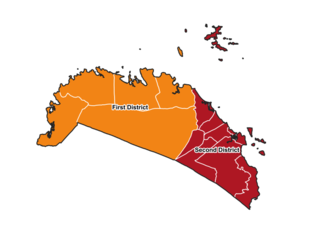
The legislative districts of Camarines Norte are the representations of the province of Camarines Norte in the various national legislatures of the Philippines. The province is currently represented in the lower house of the Congress of the Philippines through its first and second congressional districts.

The legislative districts of Quezon are the representations of the province of Quezon and the highly urbanized city of Lucena in the various national legislatures of the Philippines. The province and the city are currently represented in the lower house of the Congress of the Philippines through their first, second, third, and fourth congressional districts.
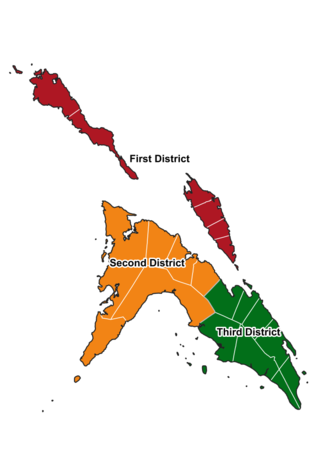
The legislative districts of Masbate are the representations of the province of Masbate in the various national legislatures of the Philippines. The province is currently represented in the lower house of the Congress of the Philippines through its first, second, and third congressional districts.
The legislative districts of Capiz are the representation of the province of Capiz in the various national legislatures of the Philippines. The province is currently represented in the lower house of the Congress of the Philippines through its first and second congressional districts.
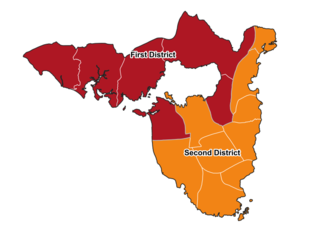
The legislative districts of Sorsogon are the representations of the province of Sorsogon in the various national legislatures of the Philippines. The province is currently represented in the lower house of the Congress of the Philippines through its first and second congressional districts.
The legislative districts of Guimaras are the representations of the province of Guimaras in the various national legislatures of the Philippines. The province is currently represented in the lower house of the Congress of the Philippines through its lone congressional district.
The legislative districts of Santa Rosa are the representation of the component city of Santa Rosa, Laguna in the Congress of the Philippines. The city is represented in the lower house of the Congress through its lone congressional district since 2022.

Marinduque's at-large congressional district, also known as Marinduque's lone district, is the sole congressional district of the Philippines in the province of Marinduque. Marinduque has been represented in the country's various national legislatures since 1898. The first congressional delegation consisted of two members in the First Philippine Republic legislature known as the Malolos Congress. Since 1922 when it was re-established as a regular province separate from Tayabas, Marinduque has been entitled to one member in the House of Representatives of the Philippines, elected provincewide at-large, except for a brief period between 1943 and 1944 when it was again eliminated and included as part of Tayabas's at-large representation for the National Assembly of the Second Philippine Republic.

Nueva Vizcaya's at-large congressional district, also known as Nueva Vizcaya's lone district, is the sole congressional district of the Philippines in the province of Nueva Vizcaya for various national legislatures since 1898. The province first elected its representative provincewide at-large for the Malolos Congress of the First Philippine Republic. In 1907, when the Philippine Assembly was established, the province had no representation as it was then classified as a special province under the supervision of the Department of the Interior Bureau of Non-Christian Tribes. Since 1916 when it was re-established as a specially organized province separate from its former Comandancia de Quiañgan which became the Ifugao sub-province under Jones Law, Nueva Vizcaya has been entitled to one member in the House of Representatives. It remains as a single-member district, except for a brief period between 1943 and 1944 when a second seat was allocated in the National Assembly of the Second Philippine Republic.

Abra's at-large congressional district refers to the lone congressional district of the Philippines in the province of Abra. Abra has been represented in the country's various national legislatures since 1898. The first congressional delegation consisted of two members in the First Philippine Republic legislature known as the Malolos Congress. Since 1919 when it was re-established as a regular province separate from Ilocos Sur, Abra has been entitled to one member in the House of Representatives of the Philippines, elected provincewide at-large, except for a brief period between 1943 and 1944 when it was again represented by two members in the National Assembly of the Second Philippine Republic. From 1978 to 1984, all provinces were converted into multi-seat regional at-large districts for the Interim Batasang Pambansa of the Fourth Philippine Republic, with Abra forming part of the twelve-seat Region I's at-large district. It was restored as a single-member district in 1984.
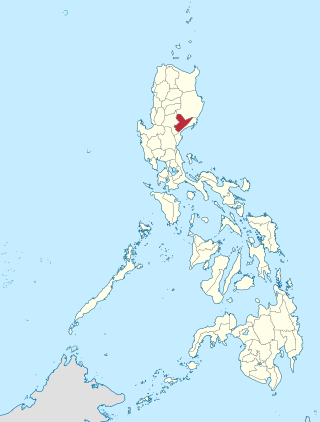
Quirino's at-large congressional district is the sole congressional district of the Philippines in the province of Quirino. It has been represented in the House of Representatives since 1987 and earlier in the Batasang Pambansa from 1984 to 1986.
Davao's at-large congressional district may refer to several occasions when a provincewide at-large district was used for elections to the various Philippine national legislatures from the undivided province of Davao.
Nueva Ecija's at-large congressional district was the provincewide electoral district of Nueva Ecija for Philippine national legislatures before 1987.












